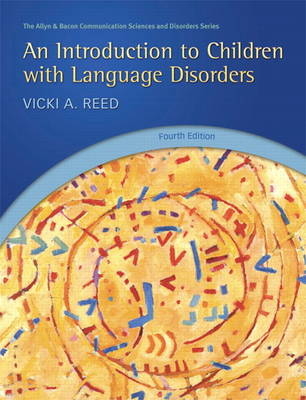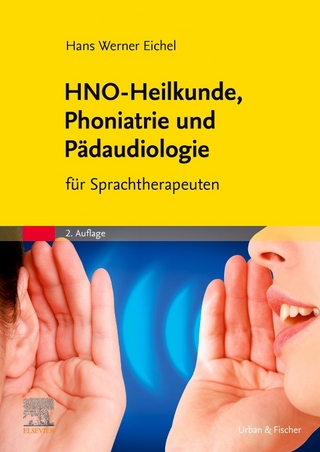
An Introduction to Children with Language Disorders
Pearson (Verlag)
978-0-13-139048-5 (ISBN)
- Titel ist leider vergriffen;
keine Neuauflage - Artikel merken
The fourth edition of An Introduction to Children with Language Disorders provides readers with an in-depth and comprehensive overview that is unsurpassed in comparable texts. In three parts, this guide to child communication disorders presents the characteristics of common language disorders seen in children, discusses assessments for these disorders, and presents the most current information on language disorder intervention. In addition, this popular text covers topics often left out by similar books, such as special populations of children with language disorders, gifted children, children with other learning disabilities, children with cleft palates, bilingual children, and children with visual impairments.
TABLE OF CONTENTS
PART ONE: ASPECTS OF NORMAL LANGUAGE AND COMMUNICATION
Chapter 1: LANGUAGE AND HUMAN COMMUNICATION: AN OVERVIEW
COMMUNICATION
Language
Speech
Extralinguistic Aspects of Communication
A Bit More about the Relationships among Speech, Language, and Communication
COMPONENTS OF LANGUAGE
Phonology
Semantics
Syntax
Morphology
Pragmatics
COMPREHENSION AND PRODUCTION
COMMUNICATION MODES
Auditory-Oral System: Hearing and Speech
Visual-Graphic System: Reading and Writing
Visual-Gestural Systems
BIOLOGICAL, COGNITIVE AND SOCIAL BASES OF HUMAN COMMUNICATION
Biological Bases of Communication
Cognitive Bases for Language
Social Bases of Human Communication
SUMMARY
Chapter 2: NORMAL LANGUAGE DEVELOPMENT: A REVIEW
THE PRELINGUISTIC PERIOD: THE FIRST 12 MONTHS
Prelinguistic Communication Development
Prelinguistic Vocal Development
THE FIRST WORD PERIOD
Phonology
Semantics
Pragmatics
THE PERIOD OF TWO-WORD UTTERANCES
Semantic—Syntactic Development
Types of Two-word Utterances
THE PRESCHOOL YEARS AND BEYOND
Phonology
Semantics
Morphology
Syntax
Pragmatics
LANGUAGE, LITERACY, AND EDUCATION
Emergent Literacy and Preliteracy
School
SUMMARY
PART TWO: CHILDREN WITH LANGUAGE DISORDERS
Chapter 3: TODDLERS AND PRESCHOOLERS WITH SPECIFIC LANGUAGE IMPAIRMENT
IDENTIFICATION OF CHILDREN WITH LANGUAGE IMPAIRMENT
Mental Age, Chronological Age, and Language Age
Normal Variation, Normal Distribution, and a Statistical Approach
Social Standard
Clinical Markers
Challenging and Changing the Child’s Language Performance
Risk Factors for Language Problems
AN OVERVIEW OF SPECIFIC LANGUAGE IMPAIRMENT
Delay versus Disorder
Subgroups of Young Children with Specific Language Impairments
A Label for It and Reasons for It
Prevalence
Predicting Spontaneous Recovery from Early Language Delay
LANGUAGE CHARACTERISTICS OF CHILDREN WITH SPECIFIC LANGUAGE IMPAIRMENT
Some Language Precursors
Phonology
Semantics
Syntax and Morphology
Pragmatics and Discourse
Socialization and Psychosocial Factors
Narratives
IMPLICATIONS FOR INTERVENTION
Assessment
Intervention
SUMMARY
Chapter 4: LANGUAGE AND CHILDREN WITH LEARNING DISABILITIES
Mona R. GrifferVijayachandra Ramachandra
AN OVERVIEW OF CHILDREN WITH LEARNING DISABILITIES
Labels and Terminology
Prevalence
Risk Factors
The Natural History of Learning Disabilities
LINGUISTIC ISSUES RELEVANT TO LEARNING DISABILITY
Metalinguistic Skills
Differences Between Spoken and Written Language
Differences in Developmental Expectations for Language Knowledge and Use
COMMUNICATION PROBLEMS IN CHILDREN WITH LEARNING DISABILITIES
Semantics
Grammar
Narratives
Pragmatics
Reading
Writing
IMPLICATIONS FOR INTERVENTIONIssues in General and Special Education
Psychosocial Problems and Reactions
The Collaborative Service Delivery Model
A Traditional Service Delivery Model
Intervention Strategies
SUMMARY
Chapter 5: ADOLESCENTS WITH LANGUAGE IMPAIRMENT
AN UNDERRECOGNIZED GROUP WITH SIGNIFICANT PROBLEMS
Personal and Societal Costs of Adolescent Language Impairment
Reasons for Neglect and Underrecognition
LANGUAGE DEVELOPMENT
Fo Form
Content
Us Use
CHARACTERISTICS OF ADOLESCENTS WITH LANGUAGE IMPAIRMENT ASSESSMENT
Identification
Language Assessment
INTERVENTION
Principles in Determining Intervention Objectives
Factors in Implementing Intervention Objectives
Service Delivery
SUMMARY
Chapter 6: LANGUAGE AND CHILDREN WITH INTELLECTUAL DISABILITIES
Mona R. GrifferAN OVERVIEW OF INTELLECTUAL DISABILITIES
Definition
Causes and Types of Intellectual Disabilities
THE DELAY-DIFFERENCE CONTROVERSY
LANGUAGE CHARACTERISTICS OF CHILDREN WITH INTELLECTUAL DISABILITIES
Research Issues
Pragmatics
Comprehension
Semantics
Syntax
Speech Production
LANGUAGE CHARACTERISTICS OF CHILDREN WITH DOWN SYNDROME
Comprehension
Semantics
Syntax
Pragmatics
Speech Production
Phonological Awareness and Literacy
Rate of Language Learning
Use of Imitation
Explanations for Specific Language Deficit in Children with Down Syndrome
IMPLICATIONS FOR INTERVENTION
Social and Legislative Influences
Facilitating versus Compensatory Intervention
Developmental versus Remedial Logic
Language-Cognition Relationships
Pragmatics and Pragmatic Relevance
Goal Attack Strategy
Caretaker Interaction
Materials Selection
Comprehension
Lexicon
Syntax
Intelligibility and Speech Production
SUMMARY
Chapter 7: LANGUAGE AND CHILDREN WITH AUTISM
Mona R. GrifferVijayachandra Ramachandra
AN OVERVIEW OF CHILDREN WITH AUTISM
Diagnostic Criteria
Prevalence
Associated Problems
What Causes Autism?
Heredity
Natural History of Autism
COMMUNICATION IN CHILDREN WITH AUTISM
Early Communication
Preserved Abilities
Impaired Abilities
The Concept of Asynchronous Development
IMPLICATIONS FOR INTERVENTION
Assessment
Service Delivery
Special Considerations
Intervention Models S
SUMMARY
Chapter 8: LANGUAGE AND CHILDREN WITH AUDITORY IMPAIRMENTS
Mona R. GrifferOVERVIEW OF HEARING-IMPAIRED CHILDREN AND HEARING LOSS
Types and Differing Degrees of Hearing Loss and their Effects
Age of Onset of Hearing Loss and its Effects
Stability of Hearing Loss
Other Contributing Factors and their Effects
Parental Hearing Status
Early Identification
Concomitant Deficits
Background Noise
ORAL LANGUAGE, SPEECH, AND LITERACY CHARACTERISTICS: AN HISTORICAL OVERVIEW
Syntax and Morphology
Semantics
Pragmatics
Speech Production and Intelligibility
OTHER AUDITORY IMPAIRMENTS
Central Auditory Processing Disorders (CAPD)/
Auditory Neuropathy/Auditory Dys-Synchrony
INTERVENTION AND MANAGEMENT APPROACHES
Technology Aids and Sound Amplification Systems
Educational Approaches/Communication-Language Intervention
SUMMARY
Chapter 9: LANGUAGE AND LINGUISTICALLY-CULTURALLY DIVERSE CHILDREN
Li-Rong Lilly Cheng
CONCEPTS OF CULTURAL DIVERSITY
CONCEPTS OF LINGUISTIC VARIATION
CONCEPTS OF SECOND LANGUAGE LEARNING
LANGUAGE CHARACTERISTICS OF LINGUISTICALLY-CULTURALLY DIVERSE CHILDREN
Hispanic-American Children
African-American Children
Asian-American Children
Native American Children
A MATTER OF POVERTY
Poverty in the U.S. and Globally
Culture of Poverty
ISSUES IN ASSESSMENT
Testing Bias
Differential Diagnosis of Communicative Behaviors
IMPLICATIONS FOR INTERVENTION
Intervention for Language Differences and Language Disorders
Intervention for Language Differences
Intervention for Linguistically-Culturally Diverse Children with Other Disabilities
SUMMARY
Chapter 10: CHILDREN WITH ACQUIRED LANGUAGE DISORDERS
Cynthia R. O’Donoghue
AN OVERVIEW OF ACQUIRED CHILDHOOD APHASIA
Definition
Types of Acquired Brain Injury
Associated Problems
LANGUAGE DEVELOPMENT AND LANGUAGE RECOVERY
LANGUAGE CHARACTERISTICS OF CHILDREN WITH ACQUIRED APHASIA
Early Recovery and Language Impairment
Later Recovery and Residual Language Impairment
ACADEMIC ACHIEVEMENT
DIFFERENCES BETWEEN DEVELOPMENTAL AND ACQUIRED LANGUAGE DISORDERS IN CHILDREN
IMPLICATIONS FOR ASSESSMENT AND INTERVENTION
Assessment
Social and Legislative Influences
Augmentative and Alternative Communication
Behavior Disorders
Intelligibility
Developmental versus Remedial Logic
Facilitating versus Compensatory Intervention
Returning to School
SUMMARY
Chapter 11: LANGUAGE AND OTHER SPECIAL POPULATIONS OF CHILDREN
Mona R. GrifferVijayachandra Ramachandra
LANGUAGE AND GIFTED CHILDREN
An Overview of Giftedness
Language Characteristics of Gifted Children
Language in Disadvantaged or Disabled Gifted Children
Implications for Intervention
LANGUAGE AND CHILDREN WITH VISUAL IMPAIRMENT
An Overview of Visual Impairment
Language Characteristics of Blind Children
Implications for Intervention
LANGUAGE AND CHILDREN WITH NEUROMOTOR IMPAIRMENT
Children with Cerebral Palsy
Communication of Other Children with Neuromotor Impairment
LANGUAGE AND CHILDREN WITH CLEFT PALATE
An Overview of Cleft Palate
Language Characteristics of Children with Cleft Palate
LANGUAGE IN CHILDREN WHO STUTTER
An Overview of Language Problems in Children Who Stutter
Implications for Intervention
SUMMARY
PART THREE: LANGUAGE INTERVENTION
Chapter 12: ASSESSMENT
APPROACHES TO AND PURPOSES OF THE ASSESSMENT PROCESS
Determining if a Child Qualifies for Services
Deciding if a Child has a Language Problem Identifying the Cause of the Problem
Identifying Deficit Areas
Describing the Regularities in the Child's Language Deciding What to Recommend
TOOLS AND PROCEDURES
Gathering Information from Others
What to Assess
Methods of Assessment
INTELLIGENCE TESTING
SUMMARY
Chapter 13: CONSIDERATIONS FOR LANGUAGE INTERVENTION
CONSIDERATIONS IN INTERVENTION
Normal versus Not So Normal Processes Developmental and Nondevelopmental Intervention
Rules and Regularities
Controlling and/or Reducing Language Complexity
Comprehension or Production
Focus of Intervention and Picking Intervention Targets
Usefulness of Intervention Content
Reinforcement and Generalization
Child Characteristics
Metalinguistics
HIGHLIGHTING INTERVENTION TARGETS
Multiple ExposuresDistributed versus Massed Trials
Suprasegmental and Rate Variations
Input Modality Variations
PROCEDURES AND TECHNIQUES TO FACILITATE LEARNING OF LANGUAGE TARGETS
Before the Child’s Utterance
After the Child’s Utterance
Response Dialogues So Which Ones Should We Use?
APPROACHES TO INTERVENTION
Direct and Indirect Intervention Group and Individual Intervention
Three Language Teaching Methods
Service Delivery Models
PUTTING IT TOGETHER
SUMMARY
REFERENCES
AUTHOR INDEX
SUBJECT INDEX
| Erscheint lt. Verlag | 12.5.2011 |
|---|---|
| Sprache | englisch |
| Maße | 196 x 234 mm |
| Gewicht | 1216 g |
| Themenwelt | Medizin / Pharmazie ► Gesundheitsfachberufe ► Logopädie |
| Medizin / Pharmazie ► Medizinische Fachgebiete ► Pädiatrie | |
| Sozialwissenschaften ► Pädagogik | |
| ISBN-10 | 0-13-139048-1 / 0131390481 |
| ISBN-13 | 978-0-13-139048-5 / 9780131390485 |
| Zustand | Neuware |
| Haben Sie eine Frage zum Produkt? |
aus dem Bereich


